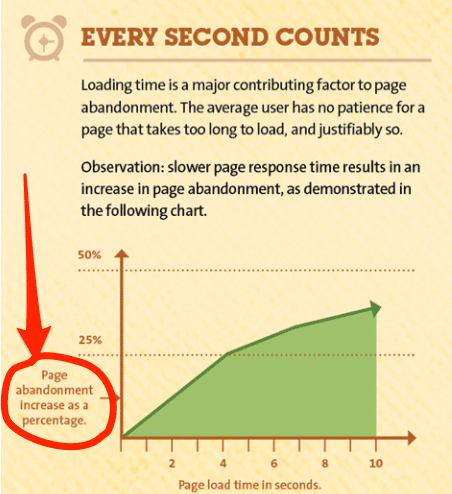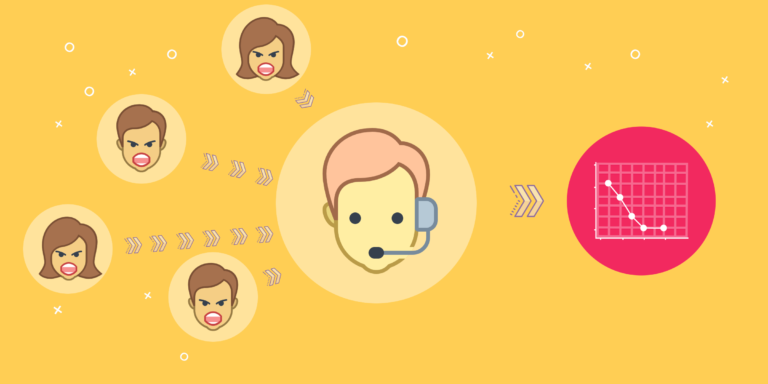Fact: Getting new users to sign up for your product is tricky.
Incredibly tricky, in fact.
After all, countless nuances affect your conversion rates throughout the entire process.
But I bet you agree with me on this:
That’s still nothing, compared to ensuring that they remain engaged and keep using your product.
After all, as Lincoln Murphy points:
“[…] from my own experience, the best SaaS companies with opt-in Free Trials see a free trial-to-paid conversion rate of less than 25%.”
At the same time, if you want to grow (and mainly, if you want existing users to start inviting more people to your product), then you must increase their engagement.
And luckily for you, in this post, I’ll show you exactly how to do that.
Intrigued? Then let’s get right to it.
[Bonus: Want to learn how to motivate more users to invite new people to your app? Check out our detailed guide »]
The Hidden Benefit of Increasing User Engagement
Look, this goes without saying:
The higher user engagement, the greater your revenue per customer.
But there’s another benefit of increasing that engagement:
Boosting growth through referrals.
You see, before customers refer or invite someone to join a new platform or product, they typically go through a process that helps them assess whether they should send that referral.
Here’s how the process looks like in practice:

Notice how the first and second stage relate to engagement.
That’s because nobody would refer a product they don’t find engaging first.
So how do you increase the user engagement then?
Here are some ideas:
#1. Improve Overall Product Performance
There’s no point in beating around the bush here:
Product load time, feature lag and other performance factors will affect how likely new users are to engage with it.
(And that’s regardless of how useful they might think your product is.)
Here, let me prove it:
According to this data from Kissmetrics, the longer users have to wait for a web page to open, the more likely they are to go somewhere else.
What’s more, according to the same source, 3 seconds waiting time for a page to load decreases customer satisfaction by about 16%.
Crazy, huh?
But there’s more. Akamai discovered that pages that take more than 2.4 seconds to load experience bounce rate up to 58%.
So, as a first step, ensure your application or platform loads fast for users, regardless of how many of them use it at the same time.
As the guys from TestingWhiz point:
“The performance of the application should be intact from the number of requests comes from the users.”
#2. Use Mental Models to Improve the First Time User Experience
You know:
Your users have a very good idea about how your product should work.
And that’s true even if they haven’t seen it yet. They still have a concept (and what goes with that, expectations) about it nonetheless.
In psychology, this behavior is called mental models. In 1986, Susan Carey, a professor of psychology at Harvard defined the term this way (note, the emphasis in bold is mine):
“A mental model represents a person’s thought process for how something works (i.e., a person’s understanding of the surrounding world). Mental models are based on incomplete facts, past experiences, and even intuitive perceptions. They help shape actions and behavior, influence what people pay attention to in complicated situations, and define how people approach and solve problems.”
And needless to say, we’re more likely to engage with something that matches any mental models we have about it.
As Ciarda Henderson-Geist, Director of User Experience and Strategy at Blast writes:
“The closer we match this expectation in a user interface, the more intuitive it will feel to a user and therefore the more comfortable the experience will be.”
The simplest way to achieve it is by matching user’s previous experience with similar products (or to put it bluntly, not trying to reinvent the wheel). If a user has always experienced a particular feature working one way, they’ll expect it to do the same in your product.
Changing it, therefore, might result in users finding product too difficult to learn and use.
#3. Help New Users Reach the Activation Point Quickly
We’ve talked about activating users extensively in our onboarding guide.
But given its importance in increasing engagement, let’s recap the idea quickly here.
The activation point is an action new sign-ups take during user onboarding that helps them understand the value of using a new platform or product.
For example, at CloudSponge, our activation point occurs when a customer installs our widget and imports their first address book.

CloudSponge’s activation point during its onboarding process.
We know that 4 out of 5 people who successfully get past this step in their onboarding will convert into paying clients, because this is the “Aha!” moment where they see and feel the value of our product inside their own website for the first time.
Consider it a success milestone, that first moment when users fully realize the benefits of using your product.
And naturally, it would be different for each product. But at the same time, every product has its activation point.
For Facebook, for example, it’s seeing 10 friends on the platform (source)
Twitter understands that people are more likely to engage with the app if they see updates in their feed. As Mattan Griffel points:
“If Twitter couldn’t get a person to follow 30 other people, that person was very unlikely to ever come back.”
[Check out our guide to user onboarding for more examples of activation points, and to learn how to get users to reach it in your app.]
#4. Monitor Engagement and Trigger Messages Based on User Activity
Look, I’m sure you know this already:
Constant communication is at the heart of keeping users engaged.
But here’s the deal:
The messages you send should go beyond just product updates or tips and tricks.
You should also ensure that you send messages that are relevant to a person at the very moment in time and correspond with their engagement.
As Mike Austin, a technologist and email marketer points:
“Real-time triggered emails get good results because they respond to subscriber actions and are relevant to them, so they benefit from current high engagement.“
But to do that, you first need to develop a system to monitor your user behavior and engagement. Some metrics that could help you identify user engagement to include:
- Daily app launches: how many times users log into the app on any given day.
- Session duration: How much time users spend in the app.
- Retention: The number of users coming back to the app.
- Number of screens per session: What users specifically do in the app.
- Occurrences of specific in-app events: Users who performed specific actions in the app.
How to measure engagement?
Countless tools can help you monitor and track how users engage with your product.
Some of the more popular analytics engines include Google Analytics (i.e. User Explorer and Cohort Analysis reports) and Kissmetrics, heatmap tools like CrazyEgg and Sumo and user session recorders like InspectLet and FullStory.
#5. Solve Users Problems Instantly with In-App Chat
I bet you could use your product with eyes closed, and still get the most out of it and more.
But the same can’t be said about your users.
First, they may have some expectations about how it should work – their mental models we discussed already.
And second, they might lack the insight to figure things out if they don’t match those mental models.
Couple that with the typical user’s need to get everything in an instant and you’re up for some serious engagement problems.
Well…unless you help overcome those challenges right there on the spot.
How? With an In-App Chat.
In-app chat allows you to provide the one-to-one help you your users and get them through any roadblocks that hinder their engagement.
There’s a multitude of products that allow you to interact with your app users in real time. Here are some of the most popular ones:
And many others.
#6. Use Gamification to Make Users Use Your Product More Often
Every time I log in to use QuuuPromote, I see this message:

Of course, the number changes, depending on my usage levels.
And that’s actually the idea!
You see, by running more of our clients content promotion campaigns through Quuu, the tool rewards me with credits I could use to run our internal promotions for free.
Incredible, right?
And that’s the premise of incentives and gamification – by offering rewards for using the product, they help increase engagement and retention.
Of course, this strategy won’t work for every product. But if there is a way that you could reward customers for their engagement, use it.
It’ll help you drive more logins, product usage, and ultimately, referrals.
[Bonus: Want to learn how to motivate more users to invite new people to your app? Check out our detailed guide »]

 Congratulations! You just successfully sent {{emails_count}} email(s).
Congratulations! You just successfully sent {{emails_count}} email(s).



